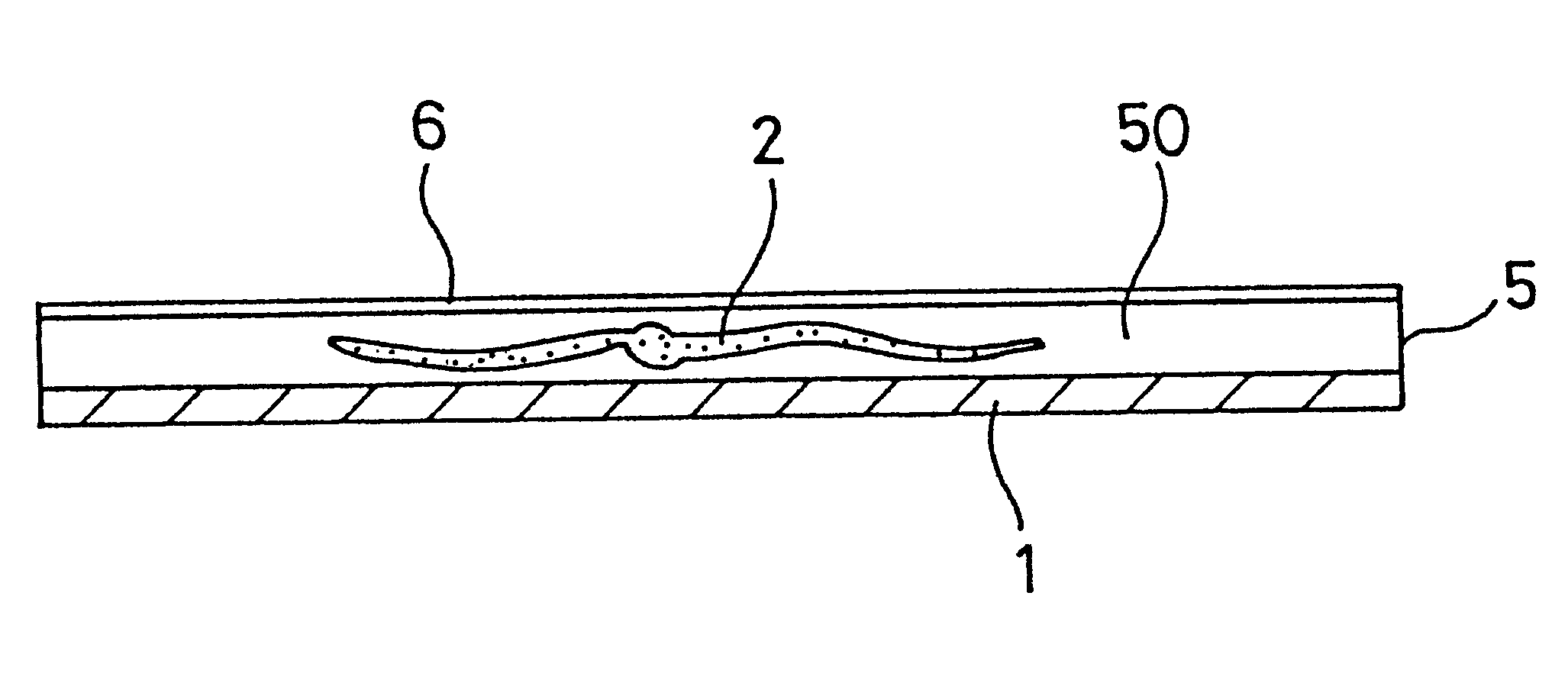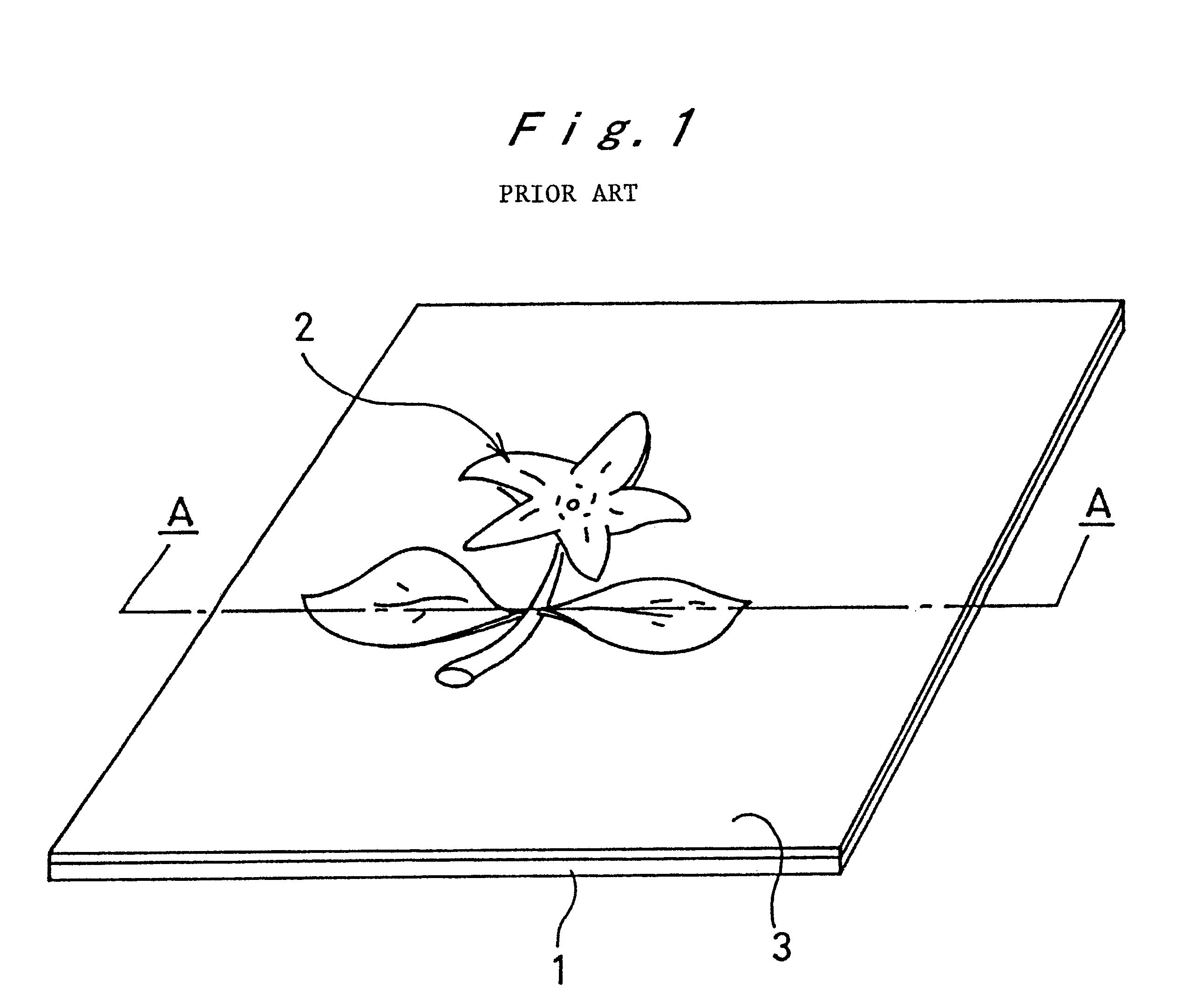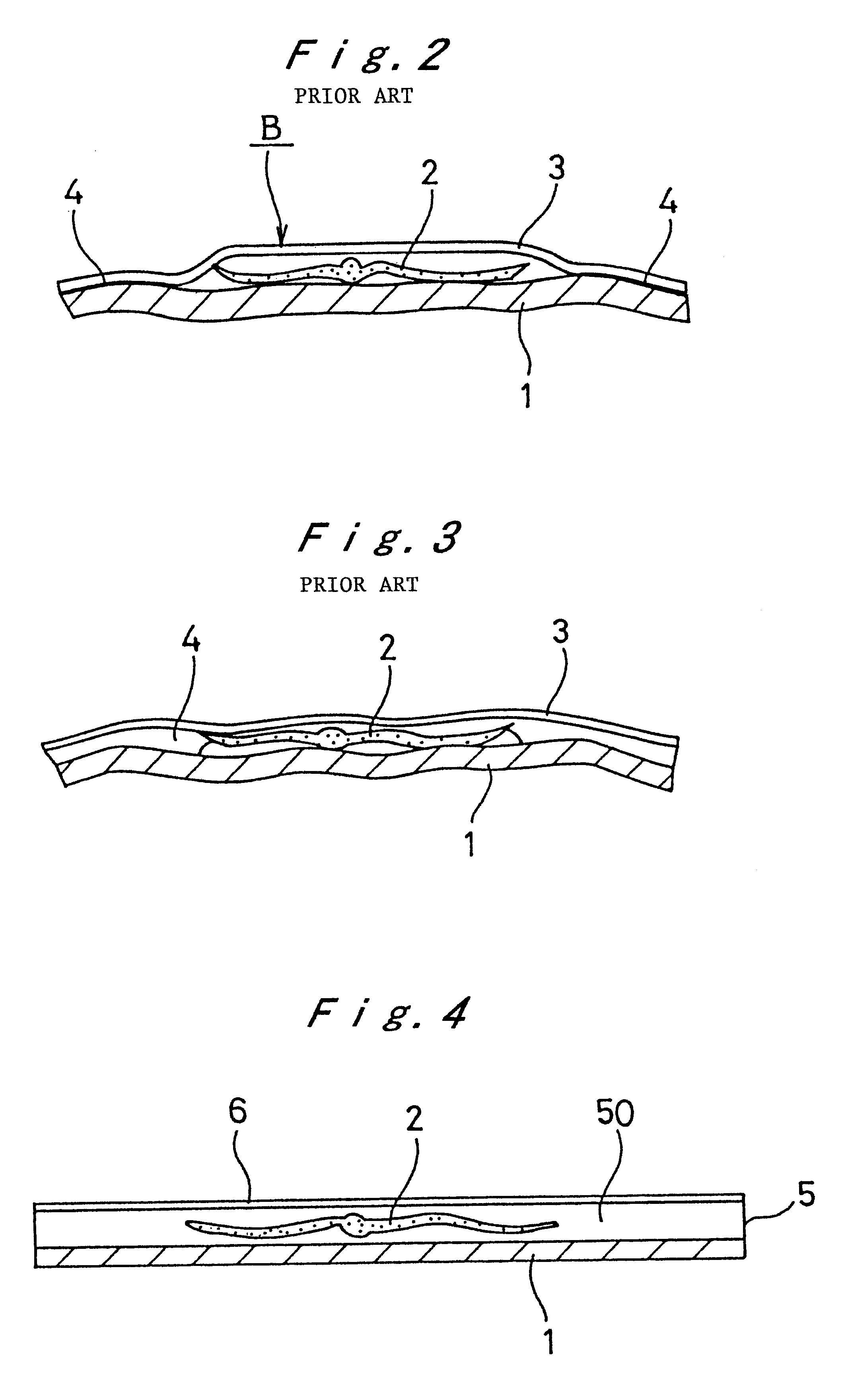Pressed flowers enclosed article
a technology for enclosed articles and flowers, applied in the field of enclosed articles for pressed flowers, can solve the problems of deteriorating the pressed flower, destroying the natural color and shape of the flower, and affecting the background effect, so as to improve the background effect, prevent curling or warping, and the color of the pressed flower is vivid
- Summary
- Abstract
- Description
- Claims
- Application Information
AI Technical Summary
Benefits of technology
Problems solved by technology
Method used
Image
Examples
example 2
The same procedure as in EXAMPLE 1 was repeated except that the intermediate layer (5), which is about 1000 .mu.m thick, was formed from a meltable porous plastic sheet, with 5 eq % partially saponified. It has a thickness of 1.3 mm and an average pore diameter of 0.5 mm (corresponding to ASTM 35 mesh).
The product in this example was as good in quality as that in EXAMPLE 1.
example 3
The same procedure as in EXAMPLE 1 was repeated except that the base layer was replaced with a 2-mm thick transparent glass plate. Adhesion between the intermediate layer and the glass base layer was satisfactory. The product in this example was as good in quality as that in EXAMPLE 1.
example 4
The same procedure as in EXAMPLE 1 was repeated except that the base layer was replaced with a laminate composed of the following layers as shown in FIG. 7.
PET film (1C), 50 .mu.m thick.
PET film (1D), 75 .mu.m thick.
ethylene-ethyl acrylate copolymer film (1E), 50 .mu.m thick.
print layer in cream color (1F).
The pressed flower (2) looked beautiful, and the resulting product was free of curling and warpage.
PUM
| Property | Measurement | Unit |
|---|---|---|
| Pore size | aaaaa | aaaaa |
| Angle | aaaaa | aaaaa |
| Temperature | aaaaa | aaaaa |
Abstract
Description
Claims
Application Information
 Login to View More
Login to View More - R&D
- Intellectual Property
- Life Sciences
- Materials
- Tech Scout
- Unparalleled Data Quality
- Higher Quality Content
- 60% Fewer Hallucinations
Browse by: Latest US Patents, China's latest patents, Technical Efficacy Thesaurus, Application Domain, Technology Topic, Popular Technical Reports.
© 2025 PatSnap. All rights reserved.Legal|Privacy policy|Modern Slavery Act Transparency Statement|Sitemap|About US| Contact US: help@patsnap.com



